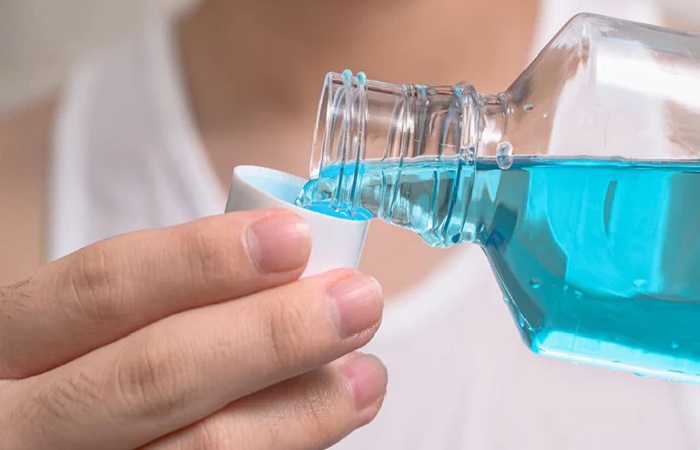Table of Contents
Introduction
If you ever have bad Toothache, it’s essential to find out what’s causing the pain. You can determine the best way to relieve pain. Swelling, or other symptoms.
Fewer irritations can usually be relieved by regular salt water rinses and cool compresses. More serious Tooth ache may need the interference of a dentist.
If you are right, wrong, or have any medical conditions that may be affected by herbal ingredients.
Rinse with Salt Water
A salt water rinse can be an effective first treatment for many people. The water that comes out of it is a natural disinfectant, and it helps remove nutrition particles and debris that might be right for you. Treating a tooth with salt water can also help reduce inflammation and heat mouth sores.
To use this process, mix 1/2 teaspoon of salt in a glass of warm water and use the solution as a mouthwash.
Hydrogen Peroxide Rinser

A hydrogen peroxide rinse can also help relieve pain and inflammation. In addition to butchery bacteria, hydrogen peroxide can reduce plaque and heal harmful gums.
Be sure to dilute the hydrogen peroxide well. To do this, mix 3% hydrogen peroxide with equal water and use it as a mouthwash. Don’t swallow it.
Cold Compresses
You could use a cold icepack to relieve any pain you are feeling, mainly if your toothache was caused by trauma. The cold compresses caused the blood vessels in the area to constrict. It makes the pain less intense. The cold can also reduce inflammation.
For this method, place an ice pack wrapped in a towel over the affected area for 20 minutes. You can repeat this every few hours.
Peppermint Tea Bags
You can use peppermint sachets to numb the pain and soothe tender gums.
To do this, agree to a used tea bag to cool before applying it to the affected area. It should still be slightly warm.
You can also use this technique for transmission instead of warming the area. To do this, place a used tea bag in the freezer for a few minutes to cool, then put it on your tooth
The nail has been recognized and used for thousands of years for its medicinal properties. Not only can it kill the harmful bacteria that cause dental plaque, but it can also act as a pain reliever.
To custom, crush a clove of garlic to make a paste and apply it to the affected area. If you demand, you can add a little salt. Another option is to chew a clove of fresh garlic slowly.
Vanilla Extract
Vanilla extract contains alcohol, which can help numb the pain. Its proven antioxidant assets also make it an actual remedy.
Apply a small amount of vanilla abstract to your finger or a cotton ball. Apply it right to the affected area several times a day.
Other Natural Remedies

You can prepare the succeeding remedies at home, but you may need to source the ingredients. Everything you will need is available from a local food magazine or online. Your mouth, teeth and gums are likely to be sensitive at this time, so purchasing these components from a trustworthy manufacturer is especially important. This can reduce the risk of potential irritation.
Nails
Throughout history, cloves have been used to treat toothaches because their oil can effectively numb the pain and reduce inflammation. It covers eugenol, which is a natural antiseptic.
To use this method, apply a small amount of clove oil to a cotton ball and the affected area. Weakening the clove oil with a few drops of carrier oil, such as olive oil or water, is recommended. Do it several times a day.
You can also add a droplet of clove essential oil to a small glass of water and make a mouthwash.
Guava Leaves

Guava leaves have anti-inflammatory possessions that can help settle wounds. Its antimicrobial activity can also help in oral care.
Chew fresh guava leaves or add crushed guava leaves to boiling water to make a mouthwash.
Wheatgrass (wheatgrass)
Wheatgrass has countless healing properties and can help heal your body from within if you take it. It can relieve inflammation in the mouth and prevent infection. Its high chlorophyll content can also fight bacteria.
To use, use wheatgrass juice as a mouthwash.
Thyme
Thyme also has powerful antibacterial and antioxidant properties that can help treat toothaches.
To use, apply a few drops of thyme essential oil and a few drops of water to a cotton ball. After diluting the oil with water, apply it to the affected area.
You can also add a drop of oil to a small glass of water and make a mouthwash.
Benefits of Water Flossing
There are several reasons why some people prefer water flossing over traditional floss or floss picks. Water flossing suggests an easier way to protect your teeth from plaque and germs if you have sensitive gums, wear braces, or have difficulty using your hands to use standard string floss.
Other benefits of Water Flossing include:
- Water flossers remove more plaque than traditional floss.
- Water flossers are gentle on the gum tissue.
- Water flossers are easy to use.
- Water flossers are ideal for patients undergoing orthodontic treatment, such as braces.
- Water flossers won’t catch on sharp edges or get stuck in your teeth.
- Water flossers provide a deeper clean than old-style dental floss.
When should you see your Dentist?

If your toothache is severe or results from a more serious medical condition, you should see your dentist to pleasure it correctly. In many cases, toothache will require medical attention. An over-the-counter pain reliever like ibuprofen may support you until you can see a dentist.
You should also see your dentist if you experience any of the following symptoms:
- fever
- difficulty breathing or swallowing
- general pain that lasts longer than a day or two
- swelling
- pain when chewing
- abnormally red gums
- foul-tasting discharge.
Conclusion
Toothache can have causes that aren’t due to underlying disease. Examples include biting into something hard, flossing, and getting something stuck in between the teeth or braces. In children, it’s a regular part of the developmental process.
Related posts
Featured Posts
Best Gynecologist in Kolkata
What do you mean by a Gynecologist? The studies and treatments of the medical conditions and diseases of women are…
Face Swimsuit – A Breakdown of Swimsuit Styles
Introduction Face Swimsuit – Make your very own face swimsuit in two fabrics and eight sizes. Face-on swimsuit print is…


